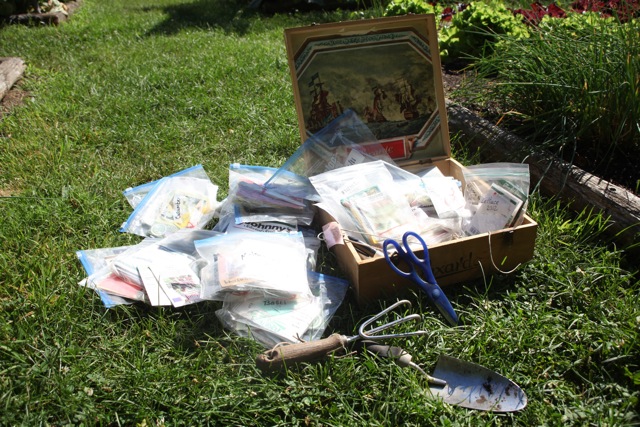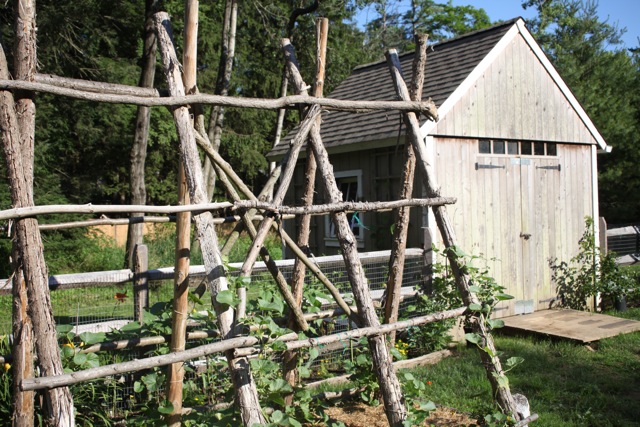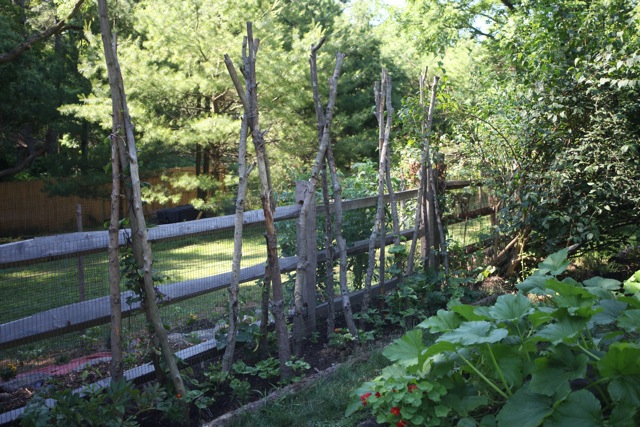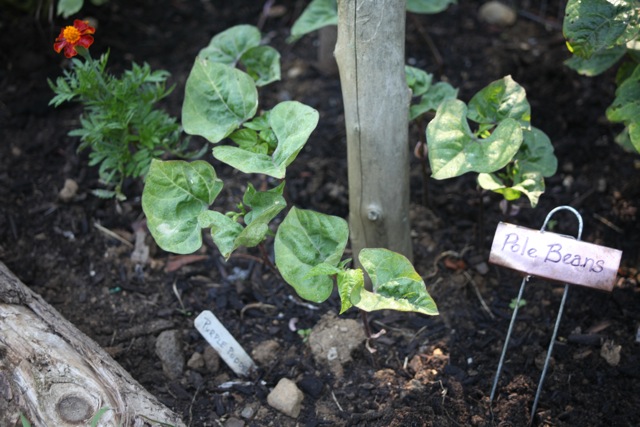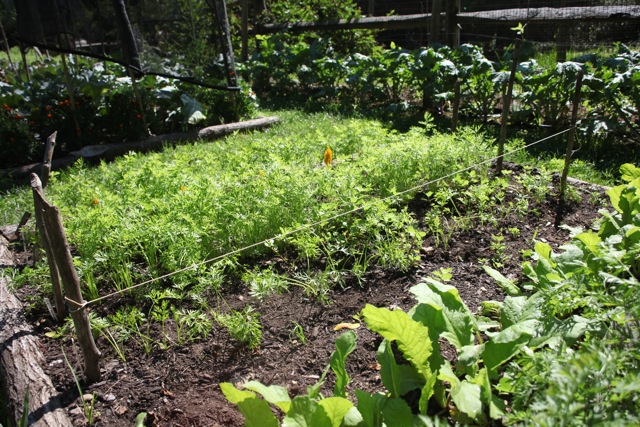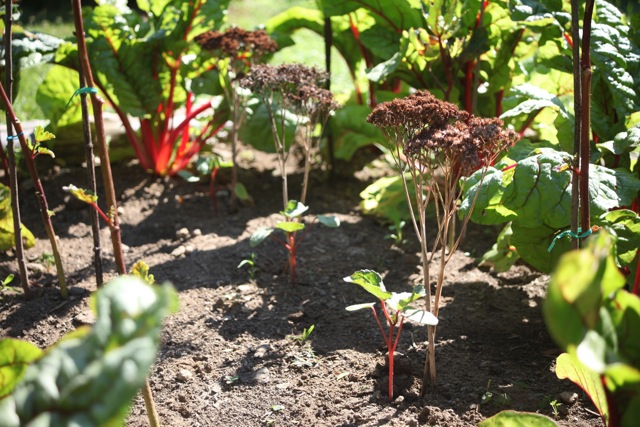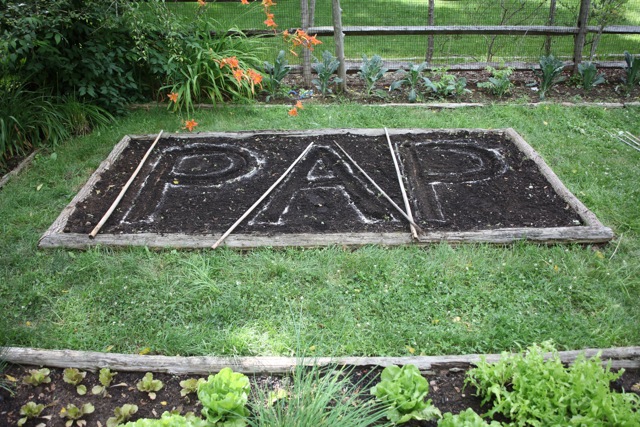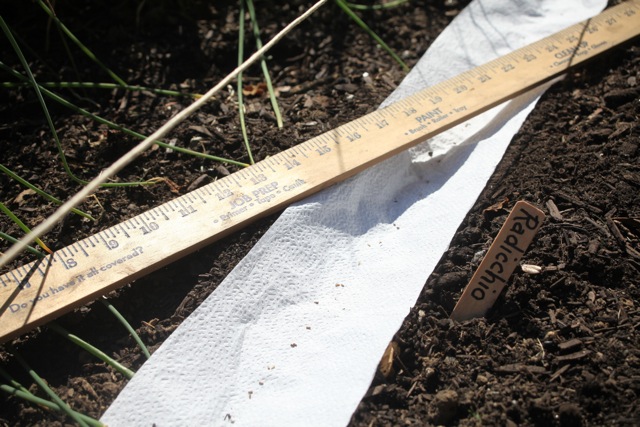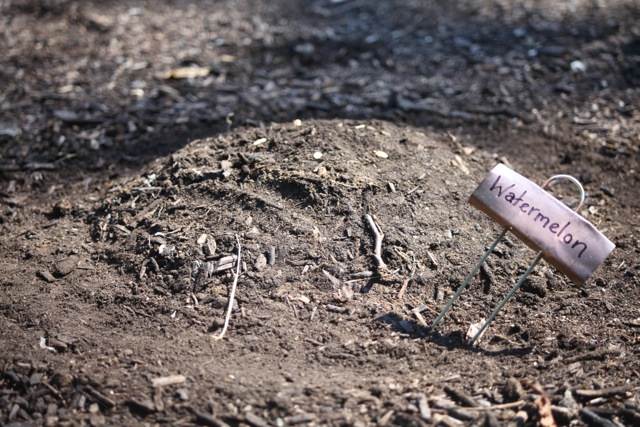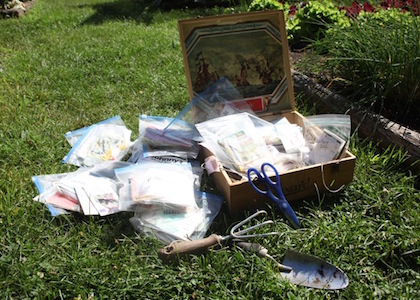
Tips for Sowing Vegetable Seeds in Your Kitchen Garden
By Pamela Page
The easiest way to grow vegetables is to plant seeds directly into the ground. Some vegetables such as beans, cucumbers, radishes, melons and squash mature within a typical growing season and don’t transplant well and hence should always be planted directly in the ground as soon as the soil reaches a temperature of roughly 60 degrees. Depending on where you garden, it’s probably time to sow these seeds.
Prepare your planting beds by making sure they are level and weed and rock-free.
Pole beans, cucumbers and some squash benefit from being trellised. Here’s my design for a cucumber/squash trellis:
This is a great way to grow pole beans:
It’s a good idea to mark where you planted your seeds. Whenever I plant in a row, I mark each end with a stick and stretch a string between the markers. In this way, I always know where the food is supposed to be. Anything else is a weed.
When I sow seeds in between established plants, I use last year’s sedum flowers to mark the spot so I can see if the seeds germinate.
I don’t plant simply in rows. This year I’m “growing” my initials with salad greens!
Seeds are planted at varying depths based upon their size. The depth is usually listed on the seed packet, but basically, seeds like to be covered up to three times their diameter. If you bury them too deeply, they may not germinate because they don’t have the strength to reach the surface of the soil. After you’ve set the seeds at the required depth, firm the soil by tamping it with your hands. It’s important to make contact between the seeds and the moist soil.
Seed spacing also matters: Plants don’t like to live in crowded conditions. If they don’t have enough space, they may produce little or no yield. Spacing requirements are listed on the seed packet. It’s easy to space large seeds such as beans and melons correctly. Tiny seeds take time and patience.
I use a ruler to make two-inch trenches for small seeds such as lettuce, radish and kale. Then I lay a piece of toilet paper in the trench and sow the seeds on top.
Watering is the key to successful germination. You should never let the seedbed dry out. There is one exception to this rule. Once planted, beans that are prone to rotting, should not be watered until they emerge. When you water be careful not to blast the hose. You will wash the seeds out of the bed or mess up the spacing.
Each vegetable has its own way of being planted. In addition to rows for small seeds, I plant squash and watermelon in little hills about six inches high since they rot easily if the soil is too wet, and the hills insure that the soil dries quickly.
For beans and sunflowers, I make a hole with my finger about 1 1/2 inches deep.
Cucumbers love moisture, so I make a little well so the water is always directed toward the seed.
If you seed all of your crops at the same time, you can end up with a lot of everything all at once. Planting smaller quantities of seed every two or three weeks helps you avoid this situation with the added benefit that you’ll end up with a continuous harvest throughout the growing season.
